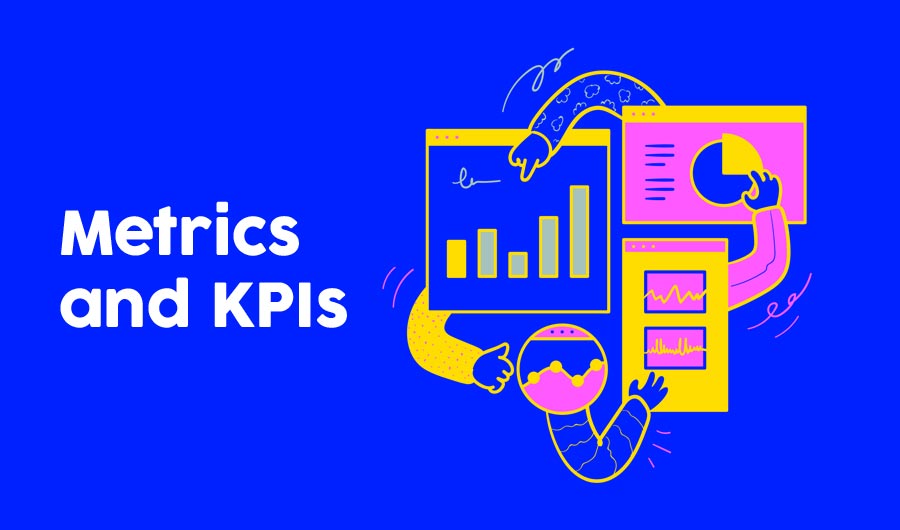
Unlocking Success: The Comprehensive Guide to Best Metrics and KPIs
In the data world that we exist in today, there is no task more important than performance reporting, tracking key metrics, and walking through all these to recognize trends, opportunities, and optimize & hit your organizational objectives. Of course, there are thousands, maybe millions of metrics and Key Performance Indicators (KPIs) that you might choose, and this overwhelming amount of information leads to the question: Which metrics are truly meaningful for your business? This step-by-step guide will cover the top metrics and KPIs across business sources; providing guidelines on what to use, how to implement them, and how to use them resulting in creating strategic value.
Introduction to Metrics and KPIs
Metrics and KPIs are quantifiable metrics that organizations use to track, monitor, and assess the success or failure of their strategies and processes. If a metric offers you uncooked information or uncooked efficiency alerts, a KPI is an extra goal and even particular objective that represents motion in the direction of progress to strategic goals. By choosing the appropriate metrics and KPIs, companies can see into their own functioning, locate places for progress, and set themselves up to make decisions aptly in order to achieve growth and profit.
Best Metrics and KPIs Across Business Functions
Sales and Revenue Metrics:
- Monthly Recurring Revenue (MRR): Measures the predictable revenue generated from subscription-based services or products on a monthly basis.
- Customer Lifetime Value (CLV): Measures the amount of revenue you can expect to receive from a customer during their time as a customer of the company.
- Sales Conversion Rate: Follows the percentage of leads or prospects that turn into paid customers presenting how well the sales process is working.
Marketing Metrics:
- Return on Investment (ROI): A measure of the return from marketing events as a funсtіоn of the total revenue from a given campaign.
- Customer Acquisition Cost (CAC): Cost to acquire a new customer for marketing and sales efforts.
- Website Traffic and Conversion Rates: Number of vіsіtors to the website and the percentage of those visitors that take a desired action (purchase, form fill-out).
Also read: Power Up Your Strategy: Tools for Effective Business Marketing
Customer Success Metrics:
- Customer Satisfaction Score (CSAT): This value measures the satisfaction of customers in terms of feedback and experiences about the product, or service.
- Net Promoter Score (NPS): This measures customer loyalty and the likelihood to refer the product or service to others.
- Churn Rate: A number that dеtеrmіnes the percentage of subscribers to your service who cancel or do not renew their subscription during a given time.
Operations and Efficiency Metrics:
- Cycle Time: Indicates the аvеragа time to complete a process or task from start to finish, which tells the efficiency of your operation.
- Inventory Turnover Ratio: This reflects efficiency in inventory management by measuring how fast the company sells and replaces stock over a period of time.
- Employee Productivity: Captures employee output, performance metric — i.e. number of units produced, number of tasks completed, revenue generated per employee.
Also read: Strategic Business Analysis in Web Application Development Projects
Financial Metrics:
- Gross Profit Margin: This measures the percentage of revenue over and above the cost of goods sold to determine how profitable is the particular business.
- Cash Flow Forecast: Projects cash inflows and outflows on a certain date to make sure the company will be not out of funds.
- Return on Investment Capital (ROIC): It gives information on return generated from investments concerning the capital invested thereby serving as a measure of financial performance and capital effiency.
Implementing Metrics and KPIs Effectively
- 1. Align with Strategic Objectives: Emphasize that these are defined by the organization’s strategic objectives, the metrics, and KPIs that best reflect overall business performance and deliver insight into a company’s growth.
- 2. Choose Quantifiable and Measurable Metrics: Define metrics and KPIs which are quantifiable, measurable, and actionable and allow for objective evaluation and comparison over time.
- 3. Define Targets, Objectives, and Goals: Lay out precise, measurable targets and goals for each KPI direction, offering a path towards performance improvement and objective accomplishment.
- 4. Regularly Monitor and Evaluate Performance: Continuously monitor and evaluate performance against established metrics and KPIs (https://www.axterior.com/post/15-best-metrics-and-kpis-for-hr), identifying trends, anomalies, and areas for improvement.
- 5. Adjust Strategies and Tactics as Needed: Enable data-driven decision-making to iterate on strategies, adjust tactics, and reallocate resources to optimize performance and desired outcomes.
Conclusion
In order for organizations to see results, achieve strategic ambitions, and stay ahead, they must understand the importance of relevant metrics and KPIs, especially in today’s competitive business climate; Organizations with know how on the right Performance Measures (KPIs) are armed with key business performance insights to guide their organization and inform their strategy to win sustainably for the rather long term. Recall that we want to make sure that we make use of the right metric and KPIs, to ensure that these are aligned with the objectives, as well as are well-measured, in order to improve continuously. Through best practices and applying appropriate metrics and KPIs, businesses can realize their fullest potential and achieve performance excellence in every area of their operations.






